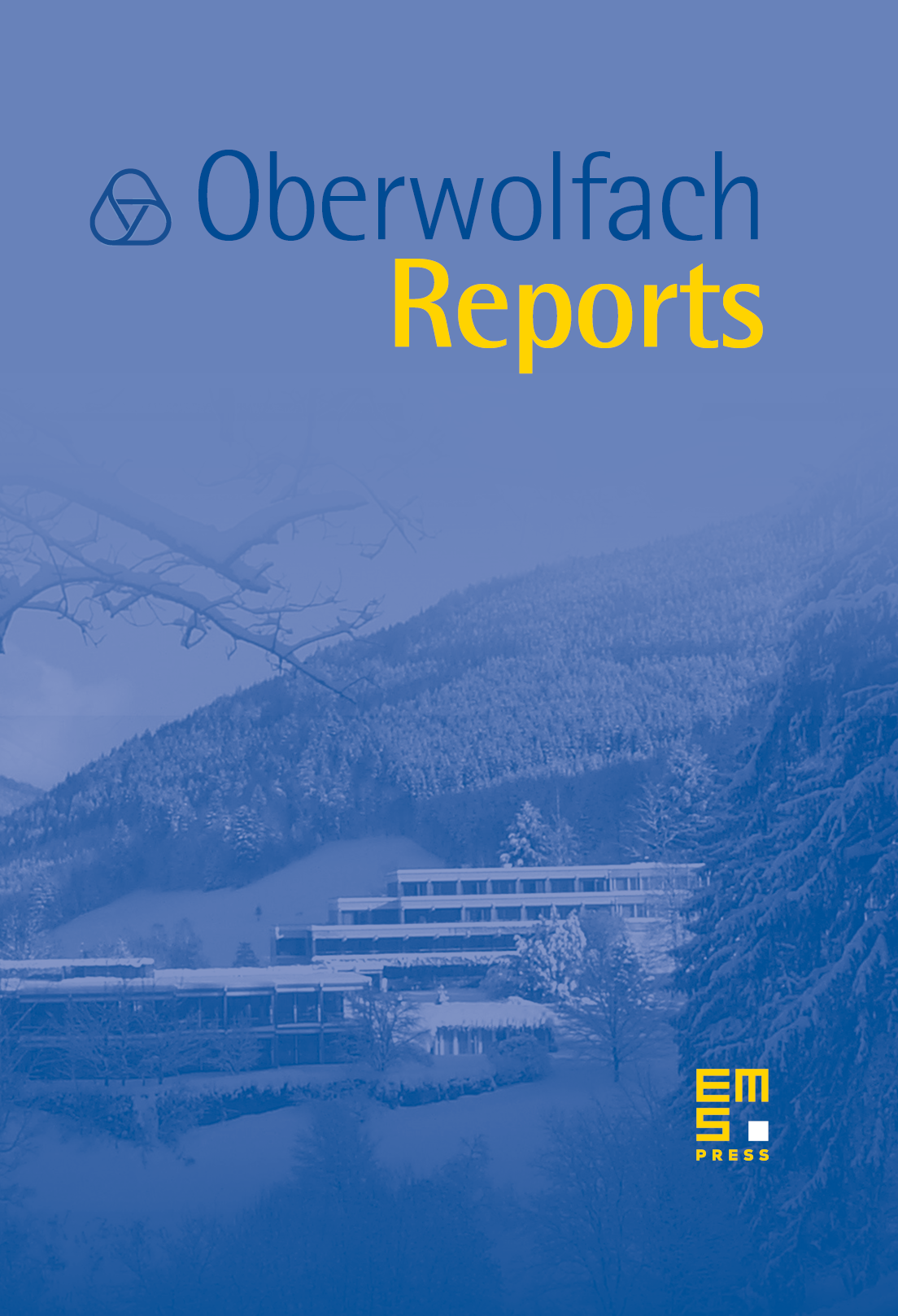Computational Group Theory
Gerhard Hiß
RWTH Aachen, GermanyDerek F. Holt
University of Warwick, Coventry, United KingdomMichael F. Newman
Australian National University, Canberra, Australia

Abstract
The workshop Computational Group Theory was the fifth of this title held at Oberwolfach. It was attended by participants with broad geographic representation from four continents. Among the participants were young researchers, visiting Oberwolfach for the first time, some of them still graduate students. We are grateful for the special EU funds making their visits possible.
The lecture program was divided into two sections. In the first we had a series of four invited longer lectures, 50 minutes each, given by distinguished, selected participants, surveying recent major developments in their fields. The first of these lectures was held by Eamonn O'Brien (Auckland), who gave a talk on “The latest developments in the matrix groups computation project”. The second was given by Bill Kantor (Eugene) on “A presentation of presentations”, introducing the remarkable result that all finite simple groups (except possibly ) can be presented by a bounded number of generators and relations. In the third talk in this series Michael Vaughan-Lee (Oxford) reported on the recently completed classification of all -groups of orders and . Finally, Gregor Kemper (München) surveyed new developments in Computational Invariant Theory.
The other section was made up of short twenty-minute lectures on new work or work in progress. We aimed at giving preference to the younger participants to present their results. This program structure prompted positive feedback by many participants.
The short talks reported on various computational aspects – data structures, algorithms, complexity, computer experiments – in a broad range of topics, including matrix groups, -groups, finitely presented groups, permutation groups, representation theory of groups, invariant theory, group cohomology, Lie algebras and combinatorics. The analysis of algorithms requires a thorough theoretical background in the respective fields.
The talks also revealed the close interrelationship between the different topics. Work for finite -groups uses Lie rings and algebraic groups, matrix group algorithms rely on methods for finitely presented groups as well as on representation theory, work on permutation groups uses representation theoretic information. The computational solution of open problems such as the construction of Brauer character tables or the cohomology rings of sporadic groups usually requires the application of almost all the known techniques. Methods from other parts of computer algebra, e.g., Gröbner bases, come into play in computational cohomology theory as well as in the construction of matrix groups which are factor groups of specific finitely presented groups, e.g., Hurwitz groups.
Despite the relatively large number of talks at this workshop, there was plenty of time for discussions. Needless to say that this time was well spent: numerous collaborations were continued and various others were started.
Cite this article
Gerhard Hiß, Derek F. Holt, Michael F. Newman, Computational Group Theory. Oberwolfach Rep. 3 (2006), no. 3, pp. 1795–1878
DOI 10.4171/OWR/2006/30